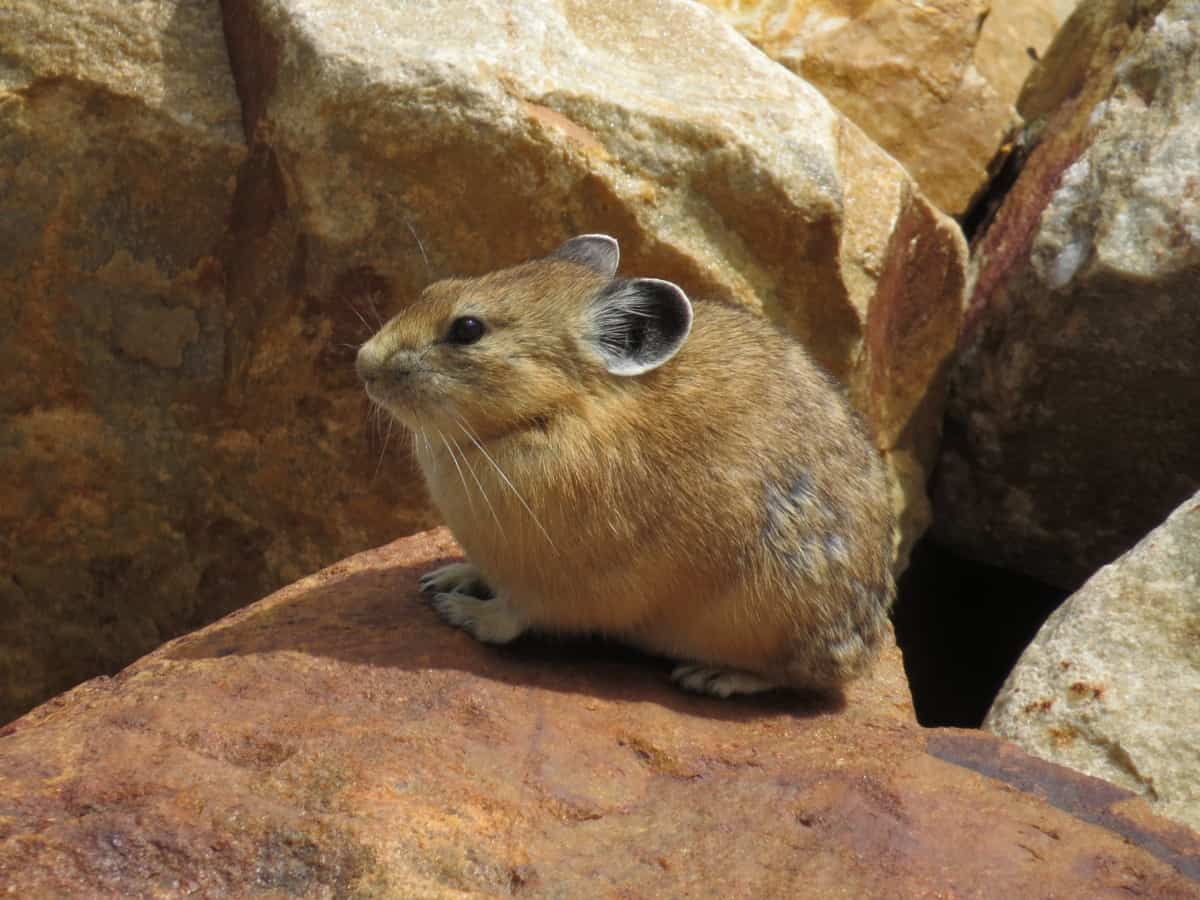
“Buying Time for Pikas” by Thor Hanson
If you can imagine a grayish-brown, rabbit-like creature the size of a grapefruit and nearly as round, that is an American pika. They inhabit mountain slopes, often well above tree line, from the high Rockies west to the Pacific Ocean, including the North Cascades. Slow to breed and reluctant to disperse, pikas have long been considered at great risk from rising temperatures—like other alpine residents, they have no place to retreat to when habitats begin shifting uphill. But new research has opened a window of hope. Pikas live almost exclusively in and around talus slopes, nesting in crevices between the rocks, and venturing out only a few feet to gather grasses and wildflowers from nearby meadows. (They drag the snipped vegetation back home for later consumption, storing it in tidy piles charmingly referred to—even in scientific papers—as haystacks.) Because of the way cold air gathers in talus, pika habitats in places like California’s Sierra Nevada mountains average 7 degrees Fahrenheit cooler than their immediate surroundings during the summer. And that cold air seeps out into adjacent vegetation at the base of the slope, often helping to maintain a patch of the very alpine meadow plants that pikas prefer. With these effects in mind, a team led by US Forest Service ecologist Constance Millar began resurveying large swathes of potential habitat—not just in alpine areas, but also where talus occurs in places far warmer than anyone had generally thought to look.
“The first thing I realized was that I needed contact lenses,” Millar told me with an easy laugh. “I couldn’t see the pellets!” Because pikas spend so much time hidden amongst the rocks, the best way to locate them involves spotting their tiny, distinctively round droppings. Once she had the proper eyewear, however, that task proved surprisingly easy. “We started finding a lot of populations,” she said, and explained that many of them turned up at lower elevations, in talus surrounded by habitats like pine forests or even sagebrush. For the pikas, all that seemed to matter was a nice, cool rock pile with a bit of meadow at its base. For Millar and her team, what mattered was that climate change refugia had suddenly been transformed from theory to reality. Pikas were already taking advantage of them, and—by all indications—they had been for a very long time.
“They’re cold-adapted. Historically, pikas flourished during glacial periods, not warmer times like now. They even used to live in the lowlands!” Ideas tumbled out of Millar in a rush, and my note-taking hand was cramping as I tried to keep up. She seemed eager to pack as much information into our phone conversation as time would allow, a habit that probably helps explain her prolific career. Over the course of four decades, studying everything from pikas to bristlecone pines, Millar had achieved what a profile in the New Yorker magazine recently called revered status among mountain biologists. She talks quickly, but she’s also a good listener, and when I told her about a talus slope I’d seen once in New England, with an out-of-place patch of boreal conifers at its base, she wanted to know exactly where it was so she could “put it on her list” of places to visit. The spruces and firs eking out a living there struck a chord with her because pikas have been doing the same thing—using talus slopes as refugia throughout the long, steady warming since the last ice age, just as they must have done repeatedly during the topsy-turvy glacial history of the Pleistocene. Modern climate change may have shifted that process into high gear, but the pattern is an ancient one.
Living within refugia is a lucky break, but it doesn’t mean that pikas have nothing to worry about. They remain highly sensitive to heat stress, loss of snowpack, and other climate-related changes, and scores of populations have indeed winked out in recent decades. “Their range is going to shrink. There’s no question about that,” Millar agreed, and even the best talus sites may eventually “warm out” if temperatures rise unabated. She paused for a second, and then added a comment that managed to capture both the limits of refugia, and their potential. “They’re just buying time,” she said, “but probably a lot of time.”
Excerpted from Hurricane Lizards and Plastic Squid: The Fraught and Fascinating Biology of Climate Change by Thor Hanson. Copyright © 2021. Available from Basic Books, an imprint of Hachette Book Group, Inc.
Thor Hanson is a conservation biologist, Guggenheim Fellow, and author of award-winning books including Buzz, Feathers, The Impenetrable Forest, and The Triumph of Seeds. He lives with his wife and son on an island in Washington State.

